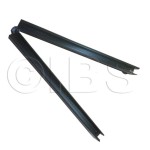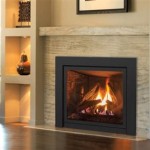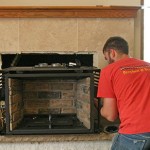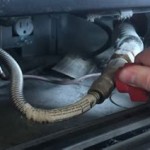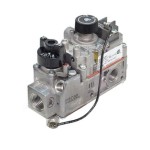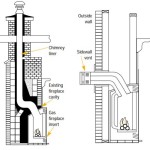Wood Burning Fireplace Blowers: Enhancing Heating Efficiency and Comfort
Wood burning fireplaces offer a traditional source of heat and aesthetic appeal in many homes. However, a significant portion of the heat generated by a fireplace can be lost up the chimney, diminishing its efficiency. Wood burning fireplace blowers are designed to address this inefficiency by circulating heated air into the room, thereby maximizing heat distribution and improving overall heating effectiveness.
A wood burning fireplace blower is a mechanical device typically installed within or beneath the firebox of a fireplace. Its primary function is to draw cool air from the room, pass it through a chamber heated by the fire, and then expel the warmed air back into the room. This forced convection process substantially increases the amount of heat that is transferred into the living space, compared to the radiant heat alone emitted by a fireplace without a blower.
The operation of a fireplace blower is relatively straightforward. A fan or blower unit, typically powered by an electric motor, is positioned to draw air from the surrounding environment. This air is then directed through a series of tubes or channels that are located within the firebox or in close proximity to the fire. As the air passes through these heated areas, it absorbs thermal energy from the burning wood. The warmed air is then forced out of the blower unit and into the room through vents or outlets.
The increased air circulation facilitated by a fireplace blower can lead to a more comfortable and evenly heated environment. Without a blower, the heat from a fireplace tends to concentrate near the firebox, creating a hot spot in the immediate vicinity. The blower ensures that the heated air is distributed more widely, reducing temperature stratification and promoting a more uniform temperature throughout the room. This is especially beneficial in larger rooms or homes with multiple stories.
The installation of a fireplace blower can vary depending on the type of fireplace and the specific blower model. Some blowers are designed to be installed directly within the firebox itself, while others are positioned beneath the fireplace or in an adjacent space. Most blowers require access to an electrical outlet for power. It is often recommended to consult with a qualified professional for installation, especially if electrical work is involved, to ensure that the blower is properly installed and operates safely and efficiently.
Improved Heating Efficiency
The core benefit of a wood burning fireplace blower is its ability to significantly improve the heating efficiency of a fireplace. Without a blower, a considerable amount of the heat generated by burning wood escapes up the chimney. This is due to natural convection, where warm air rises, drawing cooler air in at the bottom. While this creates a draft that helps maintain the fire, it also means that much of the heat is lost to the outside environment.
A fireplace blower counteracts this process by forcing heated air into the room. By recirculating the air, the blower captures a greater percentage of the heat produced by the fire and directs it into the living space. This can result in a noticeable increase in room temperature and a reduction in the amount of wood required to maintain a comfortable level of warmth. This can translate to cost savings on firewood purchases over time.
Studies have shown that fireplace blowers can improve the heating efficiency of a wood burning fireplace by as much as 20-30%. This means that less heat is lost up the chimney, and more heat is utilized to warm the home. The efficiency gain is particularly noticeable in colder climates or in homes with poor insulation, where the demand for heat is higher.
Furthermore, the increased efficiency can reduce the environmental impact of wood burning. By burning less wood to achieve the same level of warmth, the emission of pollutants such as particulate matter and carbon monoxide can be reduced. This makes fireplaces with blowers a more environmentally friendly heating option compared to traditional fireplaces without blowers.
The energy efficiency extends to other heating systems as well. By more effectively heating a designated space with the fireplace and blower, a homeowner may reduce the strain on their central heating system, leading to additional energy and cost savings. This is particularly relevant for homes that use electricity or natural gas for primary heating, as wood is often a more cost-effective alternative, especially where readily available.
Enhanced Comfort and Temperature Regulation
Beyond improved efficiency, wood burning fireplace blowers offer significant benefits in terms of comfort and temperature regulation. Traditional fireplaces tend to produce uneven heating, with the area immediately in front of the fireplace becoming excessively warm, while other parts of the room remain relatively cool. This temperature disparity can be uncomfortable and make it difficult to effectively heat the entire space.
A fireplace blower helps to mitigate this issue by circulating the heated air throughout the room. The forced convection created by the blower distributes the warm air more evenly, reducing temperature stratification and creating a more consistent and comfortable temperature. This is particularly beneficial in larger rooms or open-concept spaces, where it can be challenging to maintain a uniform temperature with traditional fireplaces.
The blower also allows for greater control over the temperature. Many fireplace blowers come equipped with variable speed controls, allowing users to adjust the airflow to suit their individual comfort preferences. Increasing the blower speed will result in more rapid heating and greater air circulation, while decreasing the speed will reduce the airflow and provide a more subtle warming effect. This level of control allows users to tailor the heating output to their specific needs and preferences.
Furthermore, the improved air circulation can help to reduce drafts and cold spots within the room. By continuously moving the air, the blower helps to prevent stagnant air pockets from forming, which can contribute to a feeling of coldness or discomfort. This can be especially beneficial in older homes with leaky windows or poor insulation, where drafts are more common.
The enhanced comfort and temperature regulation provided by a fireplace blower can create a more inviting and enjoyable living space. The ability to maintain a consistent and comfortable temperature throughout the room can make it easier to relax and enjoy the ambiance of the fireplace.
Cost Savings and Long-Term Value
While the initial investment in a wood burning fireplace blower may seem like an added expense, it can offer significant cost savings and long-term value. The improved heating efficiency of the blower translates to a reduction in the amount of wood required to heat the home, leading to savings on firewood purchases over time. Depending on the frequency of fireplace use and the cost of firewood, these savings can be substantial.
Additionally, the reduced strain on the central heating system can lead to further energy savings. By supplementing the primary heating source with the fireplace and blower, homeowners can reduce their reliance on expensive fuels such as electricity, natural gas, or propane. This can be particularly beneficial during periods of peak energy demand, when utility rates are typically higher.
The increased lifespan of the central heating system is another potential benefit. By reducing the workload on the furnace or heat pump, the fireplace blower can help to extend the life of these appliances, reducing the need for costly repairs or replacements. This can represent a significant long-term savings for homeowners.
The improved air circulation provided by the blower can also help to reduce moisture buildup in the home. By preventing stagnant air pockets from forming, the blower can help to minimize condensation and prevent the growth of mold and mildew. This can lead to improved indoor air quality and reduced maintenance costs associated with moisture damage.
Finally, a wood burning fireplace blower can enhance the resale value of a home. A fireplace with a blower is often viewed as a desirable feature by prospective buyers, as it offers both aesthetic appeal and functional benefits. This can make the home more attractive to potential buyers and potentially increase its market value. The combination of cost savings, improved comfort, and enhanced home value makes a fireplace blower a worthwhile investment for many homeowners.

Fireplace Efficiency Blowers And Why You Should Have One

Why Should I Get A Fireplace Blower For My Masonry

How To Replace Your Rsf Fireplace Blower Fan

3 Blade Mini Fireplace Fan Furnace Air Blower For Wood Log Burner Eco Friendly Heat Powered Stove China Home Appliance Made In Com

Fireplace Blowers Explained How Fans Work Regency

Superior Wct6920ws Epa Wood Fireplace Blower Brick Panels Free

Spitfire Tube Fireplace Heaters Heater Blower Wood Burning

Best Wood Burning Fireplace Insert With Blower Forestry Reviews

1pc 10 Blades Fireplace Fan Wood Stove Non Electric Thermoelectric Heat Powered Aluminium Silent Log Burner Thanksgiving Gift Fall Winter Essential Accessories

6 Blade Fireplace Eco Friendly Fan Mini Furnace Air Blower For Wood Log Burner Heat Powered Stove China Made In Com
Related Posts



